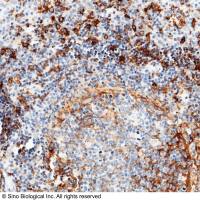In Vitro Translation Using Rabbit Reticulocyte Lysate
The rabbit reticulocyte in vitro translation system, originally described by Pelham and Jackson (1 ), is widely used to identify mRNA species and characterize their products. Extensive descriptive protocols for the preparation of rabbit reticulocyte lysates have been previously described (2–4 and vol. 2 of this series). For the analysis of mRNA gene products, it is desirable to remove the endogenous mRNA present in the reticulocyte lysate with either micrococcal nuclease or nuclease S7. This eliminates any background translation products. Several factors are added to rabbit reticulocyte lysate to optimize translation efficiency. These include hemin (to prevent phosphorylation of initiation factor eIF2-a), an energy-generating system (e.g., phosphocreatine kinase and phosphocreatine), and calf liver tRNAs (to expand the range of mRNAs that can be translated). Other factors such as spermidine, 3′,5′-CAMP, GTP, and glucose-6-phosphate, can also stimulate translation, Protease inhibitors can be added to help prevent degradation of the translation product. Mg2+ and K+ salts are added to the lysate at levels suitable for translation of most RNA transcripts.
![预览]()






